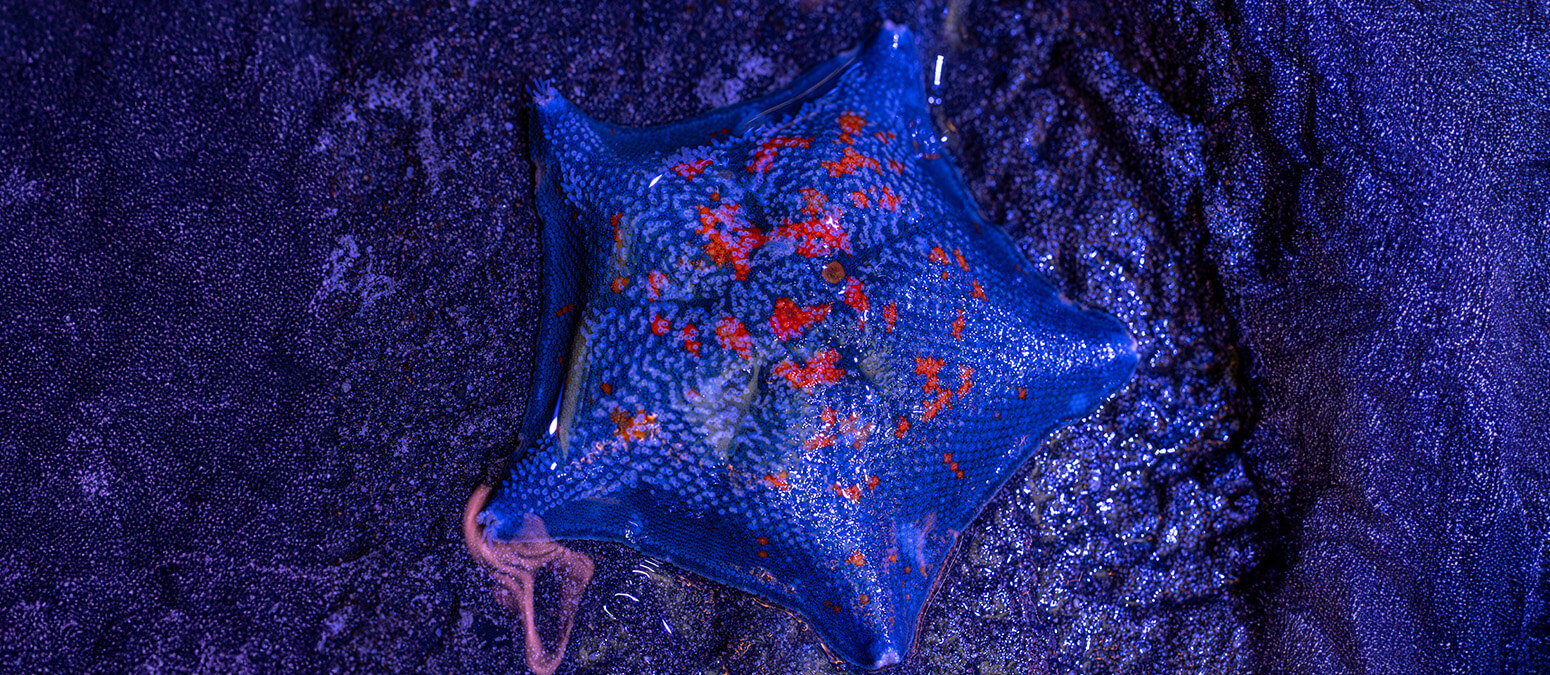
Animal Spotlight
Bat Star
Patiria miniata/Asterina miniata
Colorful Clean-Up Crew
Bat stars are vital ocean clean-up crews, feeding on algae and decaying animal tissue. These commonly reddish-orange sea stars are found in a variety of solid and mottled colors, including green, purple, brown, yellow, and white, and have a fuzzy appearance due to gill-like structures that aid in breathing.
While they can have four to nine arms, which can regenerate if lost, it’s most common to see a five-armed bat star. Each of these arms has an eyespot at the end that helps them detect light and water vascular system-powered tube feet that help them move and sense prey. To avoid becoming prey, these scavengers will cover themselves in a mucus that deters predators.
Meet the Neighbors
Nestled in the rocky shores of The Tide Pool, bat stars share their habitat with a variety of other species like the spot prawn.

Spot Prawn
The largest shrimp off the U.S. West Coast, these clever crustaceans start life as males, then switch to females as they mature.
Ready to Visit?
Feel bat stars, spot prawns, anemones, and more in one of the only cold-water touch habitats on Florida’s west coast.
